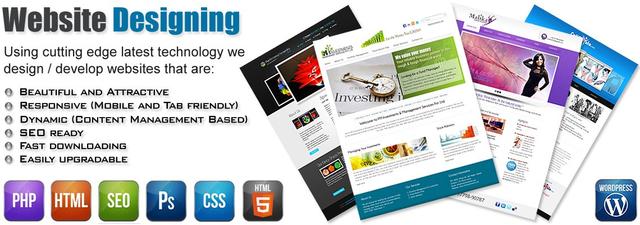The Basics of Reliable Web Style for Newbies
Efficient web style is a diverse discipline that substantially impacts user involvement and contentment. For newbies, realizing the fundamentals-- such as recognizing customer experience, selecting an ideal shade scheme, and ensuring receptive design-- can be daunting yet gratifying. Each selection, from typography to aesthetic power structure, plays a critical duty in producing a cohesive and functional website. However, the subtleties of these components typically disclose much deeper insights that can change a basic website into a compelling digital existence. What fundamental principles should amateurs focus on to achieve this goal?
Recognizing User Experience

Secret aspects of UX consist of user study, which helps recognize the requirements and preferences of the target audience, and functionality screening, which assesses just how actual individuals interact with the website. Intuitive navigation, responsive design, and clear, interesting material are crucial components that contribute to a positive customer experience.
Additionally, the emotional response generated from customers during their interactions can dramatically affect their perception of the brand - Web Design Pretoria. A website that prioritizes UX fosters trust and urges repeat sees, inevitably driving conversions and client commitment. Consequently, comprehending customer experience is not just an alternative for striving web designers; it is a basic concept that underpins successful electronic communications and affects the general effectiveness of website design.
Choosing the Right Color Combination
Choosing the appropriate color combination is often a decisive aspect in web layout that can profoundly influence user assumption and engagement. A well-balanced color pattern not only boosts the aesthetic allure of an internet site yet additionally plays a critical duty in branding and sharing the intended message.
When choosing colors, think about the mental impacts they carry individuals. Blue typically stimulates sensations of depend on and integrity, while red can promote exhilaration or urgency. Use color concept concepts, such as complementary and analogous shade plans, to create aesthetic harmony.
Additionally, make sure that your shade options straighten with your target audience and sector criteria. Performing user research study can offer beneficial insights into preferred color systems that reverberate with your demographic. Furthermore, preserving sufficient comparison in between text and history colors is essential for readability and ease of access, making certain that all customers can navigate your site easily.
Last but not least, uniformity is essential; use your shade palette uniformly across all pages to reinforce your brand identity. By attentively selecting your shade combination, you can create a compelling user experience that astounds visitors and encourages them to involve with your content.
Relevance of Responsive Design
A properly designed website not just astounds with its shade scheme however also adjusts perfectly to different devices and display dimensions. Receptive style is important in today's electronic landscape, where customers access the net through a myriad of devices, consisting of tablets, desktops, and smartphones. Web Design Pretoria. A site that falls short to get used to different screen sizes dangers pushing away a substantial section of its target market, eventually resulting in higher bounce prices and lessened customer involvement
Moreover, search engines like Google prioritize mobile-friendly sites in their ranking algorithms, meaning that responsive style is not merely a user experience enhancement however additionally a crucial element of reliable search engine optimization (SEO) By making sure that your internet site is responsive, you enhance functionality, making it less complicated for site visitors to browse and interact with your web content, despite the tool they are making use of.
Integrating responsive style practices, such as fluid grids, see here now adaptable photos, and media questions, permits an internet site to maintain a attractive and constant aesthetic across various systems. This adaptability not just improves customer fulfillment yet also cultivates brand name reliability and trust fund, as individuals are a lot more most likely to engage with a website that gives a seamless experience.
Browsing Typography Basics
Typography plays an essential function in internet style, serving as the aesthetic voice of an internet site's material. It includes the font styles, sizes, spacing, and overall discussion of text, which significantly affects readability and user experience.
Following, think about font dimension from this source and line elevation. A general guideline is to make use of a minimum font size of 16 pixels for body text to guarantee readability across gadgets. Appropriate line height, generally 1.5 times the font dimension, enhances readability by giving adequate area in between lines.
Furthermore, take note of contrast. Text must stand apart against its background to stay clear of stress on the reader's eyes. Prevent making use of way too many various typefaces; a mix of two or three can develop an unified layout. Remember that typography is not static; examination various designs and arrangements to see what resonates finest with your target market. Mastering typography will certainly raise your web style, making your website not only eye-catching but additionally practical and straightforward.

Making Use Of Visual Hierarchy
At the core of efficient internet design exists the principle of visual power structure, which overviews users via web content in a method that is both intuitive and interesting. Aesthetic power structure refers to the setup of components on a page to represent their significance through dimension, contrast, positioning, and shade. By using these strategies, designers can lead users' interest to crucial details, enhancing their total experience.
To establish a clear aesthetic pecking order, start by determining the most vital elements on your web page, such as headings, phones call to activity, or photos. Use bigger fonts and strong colors for primary headings to make them stand apart. Subheadings must be somewhat smaller, keeping a sensible circulation that routes the individual's look downward.
Furthermore, contrast plays a vital function; contrasting shades can make vital components pop, while constant spacing creates a clean format that is simple to browse. Employing whitespace successfully additionally boosts readability, permitting users to concentrate on the material without feeling overwhelmed.
Ultimately, a well-implemented aesthetic pecking order not only improves individual engagement but likewise helps with much better comprehension, making it a basic facet of efficient internet style.
Verdict
In summary, efficient internet layout for newbies demands an extensive understanding of customer experience, choice of suitable color schemes, and the execution of receptive style. Focusing on these components promotes an environment helpful to individual engagement and contentment.

At the core of efficient internet style exists the principle of aesthetic power structure, which overviews customers with material in a means that is both engaging and instinctive.In recap, efficient web layout for beginners requires a detailed understanding of customer experience, selection of proper shade combinations, and the look at these guys execution of responsive style.